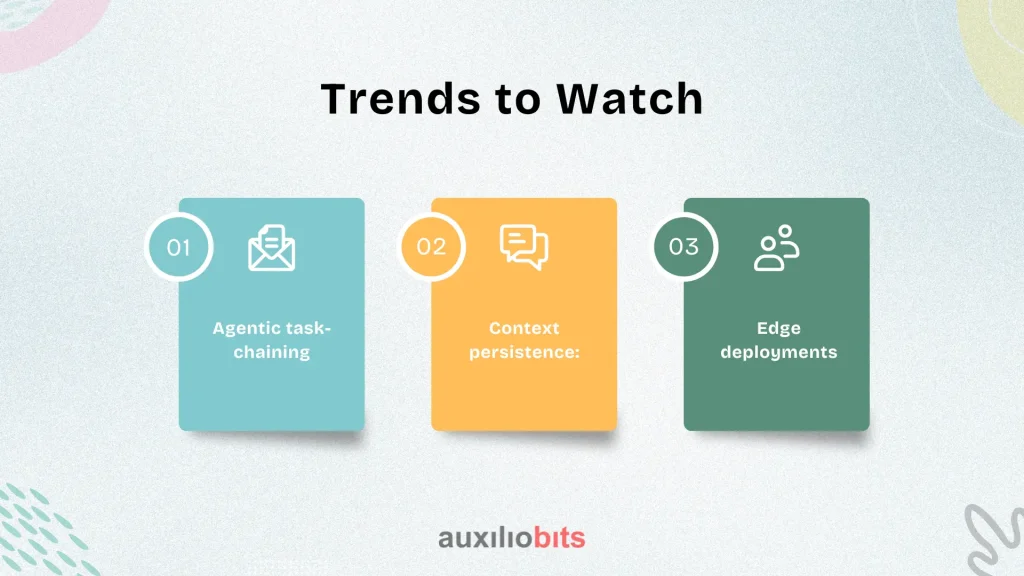
Key Takeaways
- Language barriers silently erode efficiency—missed deadlines, wrong deliveries, and reduced trust can cost millions annually.
- Modern multilingual voice agents go beyond translation, offering industry-specific jargon recognition, tone preservation, and backend system integration.
- Deployment challenges are often non-technical, with legacy system limitations, cultural nuances, and shifting terminology being the main hurdles.
- Cultural adaptation rules are essential, as literal translation alone can harm relationships in high-context markets.
- Multilingual capability is moving from optional to operational baseline—enterprises that remove language friction will have a competitive advantage.
Step into a shipping control room or a call center, and you’ll hear the same sound: voices juggling more than one language. Sometimes it’s smooth. Sometimes it’s messy. And now and then, it’s costly.
A freight order goes astray because someone heard “forty-foot container” as “fourteen-foot container.” A compliance form gets filed late because the only bilingual staff member was out sick. These aren’t dramatic tech failures; they’re mundane, human slip-ups. But in large enterprises, mundane mistakes add up to millions.
That’s why multilingual voice agents are no longer just a “cool gadget”; they are the stuff that keeps things moving without much ceremony.
Also read: How Autonomous Agents Interact with Legacy Systems via Voice
The Real Cost of Not Understanding
Nobody keeps a neat spreadsheet labeled “Losses Due to Language Barriers.” The evidence hides elsewhere:
- Support queues that drag on because staff must hand off calls midway.
- Repeated confirmation emails after every cross-border meeting.
- Field technicians are wasting time relaying instructions through intermediaries.
For example, A manufacturing supplier took a major hit when a verbal safety update in English got relayed to their Spanish plant workers. Somewhere in the chain, “weekly inspection” became “monthly inspection.” The machinery failed before the next check. It’s not glamorous, but the fix could have been as simple as a voice agent handling the call in Spanish and then logging the record in English.
And these aren’t isolated blunders. Think of the slow leak—missed deadlines, wrong deliveries, slightly dissatisfied customers who never complain but quietly shift their business to someone else. Over a year, the invisible attrition in trust and efficiency costs more than any one “big” mistake.
More Than a Fancy Translator
The older stereotype—a robotic IVR system reciting menus in multiple languages—doesn’t fit anymore. Current multilingual agents do much more:
- Spot the language in seconds, even if the caller switches mid-sentence.
- Recognize jargon that only makes sense inside a given industry.
- Translate without stripping away intent or tone.
- Push results straight into backend systems — no human retyping needed.
It’s closer to hiring a multilingual staffer with a photographic memory than installing a “better phone menu.” These agents don’t just “bridge” languages—they close operational loops. A parts supplier calling in from Osaka doesn’t just get their request translated into English; the system updates the ERP and emails a confirmation in Japanese before the human on the other end has even hung up.
Deployment Reality Check
If all it took was plugging in a translation API, every enterprise would have done this already. The messy parts show up quickly:
1. Shifting Terminology
In logistics, “pallet” might mean different load sizes depending on the region. The literal translation won’t save you if the meaning changes.
2. Latency vs. Accuracy
A customer service call can tolerate a tiny pause. A live dispatch call in the middle of a chemical spill? Not so much. Speed sometimes wins over perfect wording.
3. Backend Language Mismatch
Even if the agent gets the instruction right, older systems may only accept commands in one language. That integration layer is where projects often stall.
Sometimes, the “hardest” part of a multilingual rollout isn’t the AI at all — it’s the 15-year-old inventory system that still needs English input codes and won’t take no for an answer.
Field Stories—Success and Failure
A Telecom Provider rolled out multilingual agents for Pashto and Urdu support lines. At first, human agents resisted. But over months, call durations dropped, satisfaction scores rose, and those same agents began asking for more language coverage.
A European Insurance Firm tried to automate multilingual claims reporting. They assumed calls would stick to one language at a time. Instead, customers switched between French and English constantly. The AI stumbled, human intervention skyrocketed, and the project was abandoned within a year. In multilingual regions, language switching isn’t rare — it’s the default.
There’s a middle ground, too. A logistics company in Singapore deployed multilingual agents only for first-contact triage. Instead of trying to automate the entire call, the AI verified customer details, logged the request in the right language, and routed it to the correct team. The result wasn’t revolutionary, but it shaved enough time off each call to justify the investment in under eight months.
Where They Work Best (and Worst)
Best fits:
- First-contact triage in global customer service.
- Logistics coordination involving multiple countries.
- HR or compliance lines in manufacturing sites.
- Technician hotlines in remote areas.
Poor fits:
- Emotion-heavy negotiations, where tone can be more important than words.
- Chaotic, unstructured discussions.
- Languages with little digital training data (unless you invest in creating it).
It’s worth noting: sometimes the failure isn’t the AI’s fault. Throw an undertrained human into a high-pressure, high-translation environment, and they’ll miss details too. The real trick is matching the tool to the job.
Cultural Sensitivity vs. Literal Translation
There’s a layer many technical teams forget: culture.
A voice agent can technically “understand” the words but miss the meaning because it’s wrapped in cultural nuance. For example, in some East Asian business settings, direct refusals are rare; “We will think about it” might mean “No.” Translate it literally, and the recipient believes the matter is still open.
Or consider formal vs. informal address. In some languages, using the wrong form of “you” isn’t just awkward—it’s disrespectful. A technically correct translation can still sour the interaction.
This is why many enterprises pair their language models with cultural adaptation rules—small tweaks in phrasing that match the expected tone in a given market. It’s not just “being polite.” It’s avoiding unintentional damage to relationships that took years to build.
Under the Hood—A Lean View
A production-grade multilingual voice agent usually has:
- Language detection: Picks up on both primary language and possible dialects.
- Domain-tuned speech recognition: Trained on actual industry audio, not generic samples.
- Hybrid translation engines: Neural models for fluidity, rules for critical terminology.
- Natural language understanding: Mapping words to system actions.
- Integration layer: Connecting to ERP, CRM, and ticketing tools.
- Feedback loops: Tracking mistranslations, retraining regularly.
The less glamorous fact? Running multilingual systems burns more compute power than single-language setups. If you don’t plan for it, your cloud bill becomes its problem.
Some companies avoid this spike by caching translations for recurring phrases—a small but practical optimization that adds up over millions of calls.
Governance Isn’t Optional
The tech might get the spotlight, but governance makes or breaks these deployments:
- Legal standing: In finance, the translated call log may be the official record. Can you defend it in court?
- Equity: Popular languages often get better accuracy. That’s a risk if your customer base isn’t skewed that way.
- Maintenance: Language, jargon, and regulations shift. A “set it and forget it” approach will rot in months.
And then there’s accountability. If a voice agent mistranslates a regulatory instruction and the company is fined, who is at fault? The AI vendor? The enterprise IT team? The project manager? Governance frameworks need those answers before the rollout.
Why Companies Still Hold Back
Three common lines you hear:
- “Everyone here speaks English.” (They don’t—not under stress, not with jargon.)
- “This tech isn’t mature.” (It’s not flawless, but it’s a lot better than last year.)
- “Too expensive.” (Only if you count the cost to buy, not the cost to not have it.)
A few years ago, getting ASR, translation, and NLU to work together meant a big custom build. Now, modular APIs and orchestration frameworks mean you can pilot in weeks. The cultural change—getting teams to trust and adopt it—is often the bigger lift.
One CIO said, “The tech was easy. Convincing the sales team to stop bypassing it? That took six months.”
Trends to Watch H2

1. Agentic task-chaining:
Detect language → translate → execute → confirm, all without a human in the loop.
2. Context persistence:
Keeping track of earlier conversation parts so “it” and “that” keep meaning.
3. Edge deployments:
Running everything locally to remove network lag, which is crucial for field or emergency use.
And possibly a fourth: voice-to-voice without text in between—eliminating the transcription step for speed. It’s risky now, but the accuracy gap is closing.
Why This Isn’t a Side Project Anymore
Treating multilingual voice capability as “nice to have” is already out of date. It’s becoming an operational baseline in any company that moves goods, provides services, or runs teams across borders.
It won’t replace cultural skill—people still read nuance better than machines. But stripping out the avoidable, repetitive miscommunications? That’s worth more than it sounds on paper.
The enterprises that engineer language out of the friction equation will simply run smoothly. And in a competitive market, “smooth” is usually another word for “profitable.”








